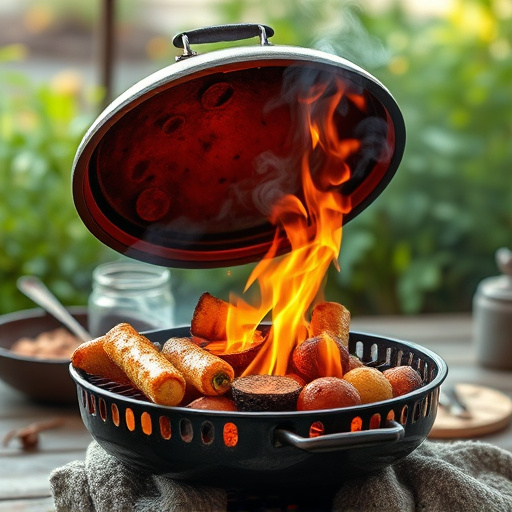Mastering the art of smoking turkey on a barbecue grill involves selecting the perfect cut (12-20 pounds), crafting a balanced BBQ rub with brown sugar, paprika, garlic powder, salt, pepper, and chili powder, marinating for deep flavor penetration, applying a classic rub before or during grilling at 350-400°F (175-200°C) until an internal temp of 165°F (74°C) is reached. Serve with complementary sides like potato salad, coleslaw, charred veggies, grilled corn, and fruit salads, and store leftover turkey and rub properly for up to 3 months.
Discover the secret to a mouthwatering BBQ turkey recipe with this classic rub guide. Learn how to transform your holiday meals or summer grill sessions into culinary masterpieces. From understanding the art of BBQ turkey to crafting the perfect spice blend, this article covers everything you need to know. We’ll walk you through choosing the right cut, marinading techniques, seasoning tips, and even suggest accompanying sides. Elevate your barbecue game with these expert tips and enjoy a juicy, golden-brown turkey that’s sure to impress.
- Understanding the Art of BBQ Turkey: A Classic Recipe's Appeal
- Choosing the Right Cut: Selecting the Perfect Turkey for Your Rub
- Crafting the BBQ Rub: Balancing Spices for Maximum Flavor
- The Marinade Method: How Long and Why It Matters
- Seasoning Techniques: Rub Application for Even Distribution
- Cooking Tips: Achieving a Golden-Brown, Juicy Turkey
- Accompanying Sides: Completing Your BBQ Turkey Feast
- Storage and Leftovers: Preserving Your Culinary Creation
Understanding the Art of BBQ Turkey: A Classic Recipe's Appeal
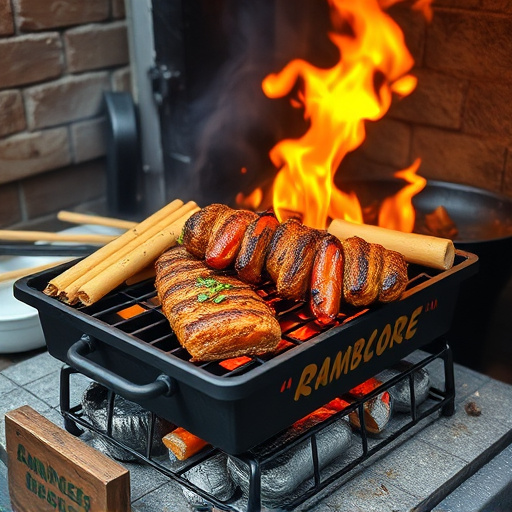
The art of smoking turkey on a barbecue grill is a beloved tradition, offering a unique and delicious twist on this classic protein. What makes a bbq turkey recipe stand out? It’s not just about the meat; it’s an experience, a symphony of flavors that emerge from slow cooking over aromatic smoke. The appeal lies in achieving that perfect balance between tender, juicy meat and a rich, savory crust.
A classic barbecue rub for turkey is like a secret formula—a blend of spices meticulously crafted to enhance the natural flavors. This recipe invites cooks to embark on a journey, where precision and patience meet. With each turn of the meat, the rub’s magic unfolds, creating a tantalizing taste profile that has folks craving more. It’s this interplay of smoke, spice, and time that makes BBQ turkey a true delight for food enthusiasts.
Choosing the Right Cut: Selecting the Perfect Turkey for Your Rub
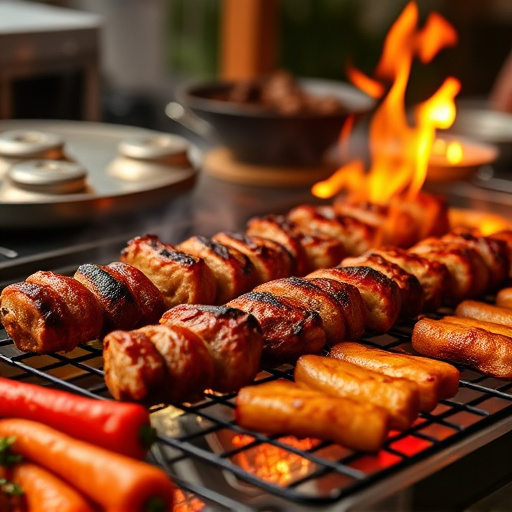
When it comes to the perfect BBQ turkey recipe, choosing the right cut is half the battle won. Opt for a high-quality, free-range turkey with good meat-to-fat ratio. The breast should be meaty and not overly lean, as this ensures even cooking and juicy results. Look for legs and thighs that are well-marbled with fat; this adds flavor and keeps the meat moist during the barbecue process. A whole, bone-in turkey allows for better heat retention and creates a more flavorful rub penetration.
Consider the size of your gathering when selecting the turkey. For smaller groups, a 12-14 pound bird is ideal, while larger gatherings might benefit from a 16-20 pounder. This ensures that everyone gets a generous helping of delicious, slow-cooked BBQ turkey as part of your outdoor feast.
Crafting the BBQ Rub: Balancing Spices for Maximum Flavor

Crafting the perfect BBQ rub is an art, especially for a classic BBQ turkey recipe. The balance of spices is key to enhancing the natural flavors of the turkey while adding depth and complexity to the final dish. A well-crafted rub combines sweet, savory, and tangy elements that merge during cooking, creating a mouthwatering crust on the bird.
Spices like brown sugar, paprika, garlic powder, salt, pepper, and chili powder form the foundation. Brown sugar brings a rich sweetness, balancing the heat from spices like chili powder. Paprika adds a smoky, earthy tone while garlic powder imparts a robust garlicky aroma. Salt and pepper are essential for amplifying all other flavors. Adjusting the ratios of these ingredients allows you to customize the rub to your taste preferences, ensuring every BBQ turkey recipe turns out delicious and memorable.
The Marinade Method: How Long and Why It Matters
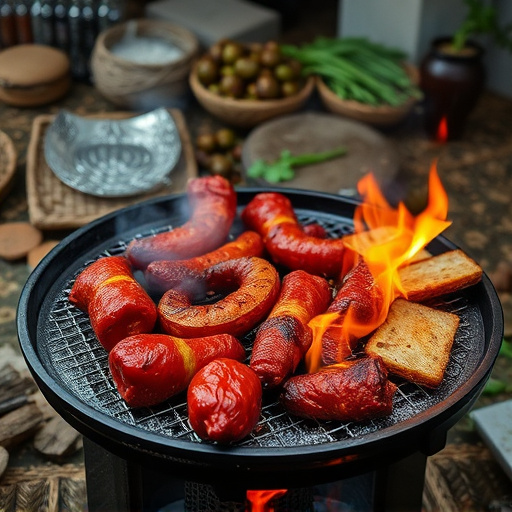
Marinating your turkey before cooking is a game-changer for those looking to elevate their BBQ game. This method involves submerging the meat in a flavorful mixture, allowing it to penetrate and transform the turkey’s taste. When preparing a classic BBQ rub for turkey, the marinade plays a crucial role in enhancing the overall flavor profile.
The duration of marination matters; typically, a few hours or even an overnight soak is ideal. This process ensures the rub adheres to the meat, creating a delicious crust and infusing moisture. Longer marinades allow for deeper penetration of spices, making your BBQ turkey recipe truly stand out. So, whether you’re a professional chef or a cooking enthusiast, don’t skip this step – let the flavors dance and transform your turkey into a mouthwatering BBQ delight!
Seasoning Techniques: Rub Application for Even Distribution
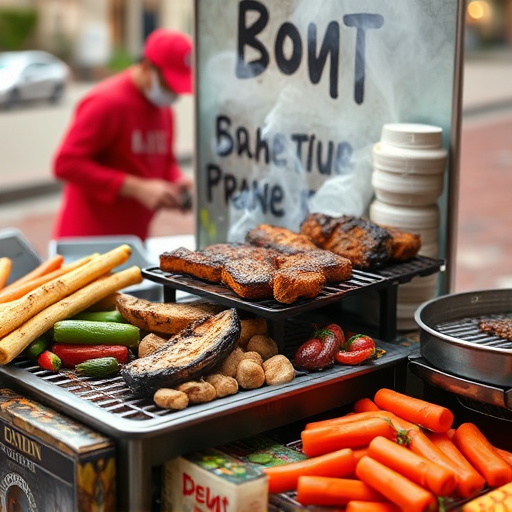
When it comes to seasoning your turkey for that perfect BBQ taste, the rub application technique is key. A rubbing spice blend ensures an even and flavorful coat on your meat. Start by preparing a generous amount of your classic barbecue rub—a secret weapon in any BBQ enthusiast’s arsenal. This blend typically includes a combination of salt, pepper, garlic powder, paprika, and various other spices tailored to enhance the turkey’s natural juices.
For optimal results, massage the rub into the turkey’s skin, ensuring every inch is coated. This direct contact allows the spices to penetrate and create a delicious crust. You can apply the rub up to 24 hours before cooking for maximum flavor infusion or use it right before grilling to lock in the juices. The even distribution of seasoning is crucial, especially with a larger turkey, to avoid dry spots and ensure every bite is an explosion of BBQ-inspired flavors.
Cooking Tips: Achieving a Golden-Brown, Juicy Turkey
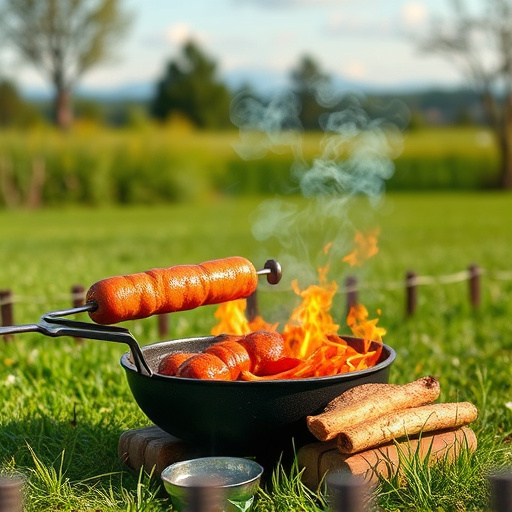
When it comes to cooking a juicy and flavorful turkey using a classic BBQ rub, there are some essential tips to keep in mind. For a golden-brown crust, ensure your turkey is dry brushed with oil before applying the rub; this step helps create a beautiful sear and prevents the rub from washing off during cooking. Use a generous amount of the BBQ rub, coating every inch of the bird for maximum flavor infusion.
The key to a juicy turkey lies in managing your cooking temperature; aim for a consistent 350-400°F (175-200°C) throughout the process. Using a meat thermometer is ideal; check the internal temperature, aiming for 165°F (74°C) to ensure a safe and delicious BBQ turkey recipe that your family and friends will love.
Accompanying Sides: Completing Your BBQ Turkey Feast
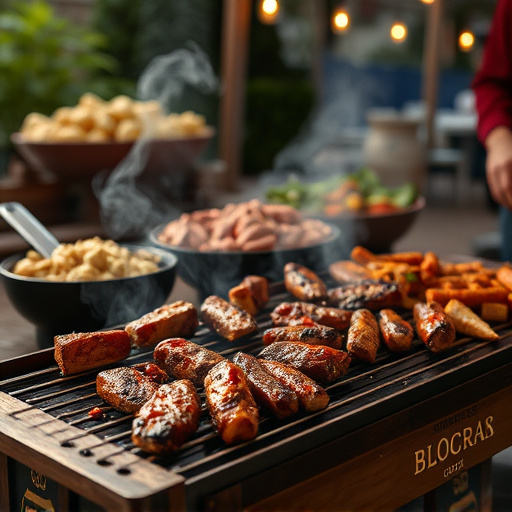
Enhance your BBQ turkey recipe with a selection of complementary sides that sing with flavor and texture. Crispy potato salad, coleslaw with a tangy kick, and charred vegetables bring a delightful contrast to the juicy, herbed turkey. For a sweet and savory combo, consider grilled corn on the cob drizzled with garlic butter, or a refreshing fruit salad dressed in a zesty vinaigrette. These sides not only complement your main course but also contribute to a well-rounded, satisfying barbecue feast.
Storage and Leftovers: Preserving Your Culinary Creation
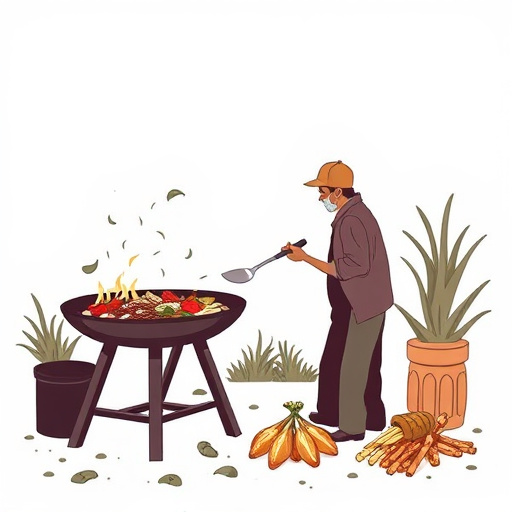
When crafting your classic barbecue rub for a delicious BBQ turkey recipe, consider the storage and preservation of your culinary creation. Proper storage ensures the flavors remain intact and prevents waste. After seasoning your turkey, store the leftover rub in an airtight container at room temperature. This keeps it fresh for up to one week. For longer-term storage, transfer the rub to the refrigerator or freezer for up to three months.
Leftover roasted turkey is a treat on its own, but incorporating it into new dishes can extend its life and enhance your culinary experience. Consider using shredded turkey in salads, sandwiches, or soups. The classic BBQ flavors from our rub will continue to delight your taste buds even after the initial cooking.
